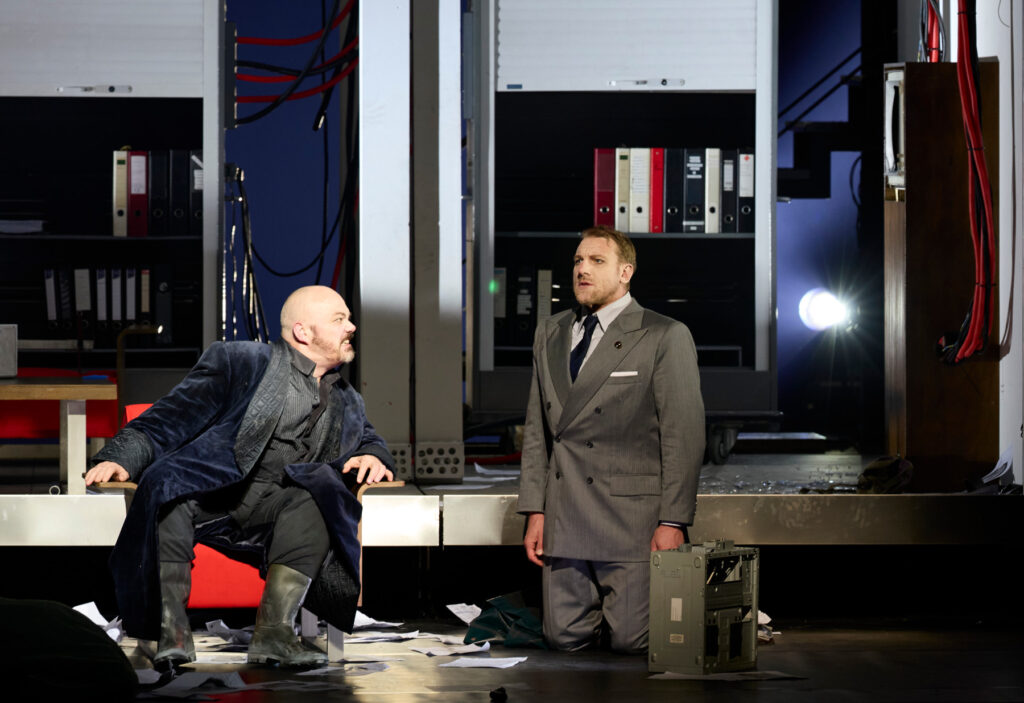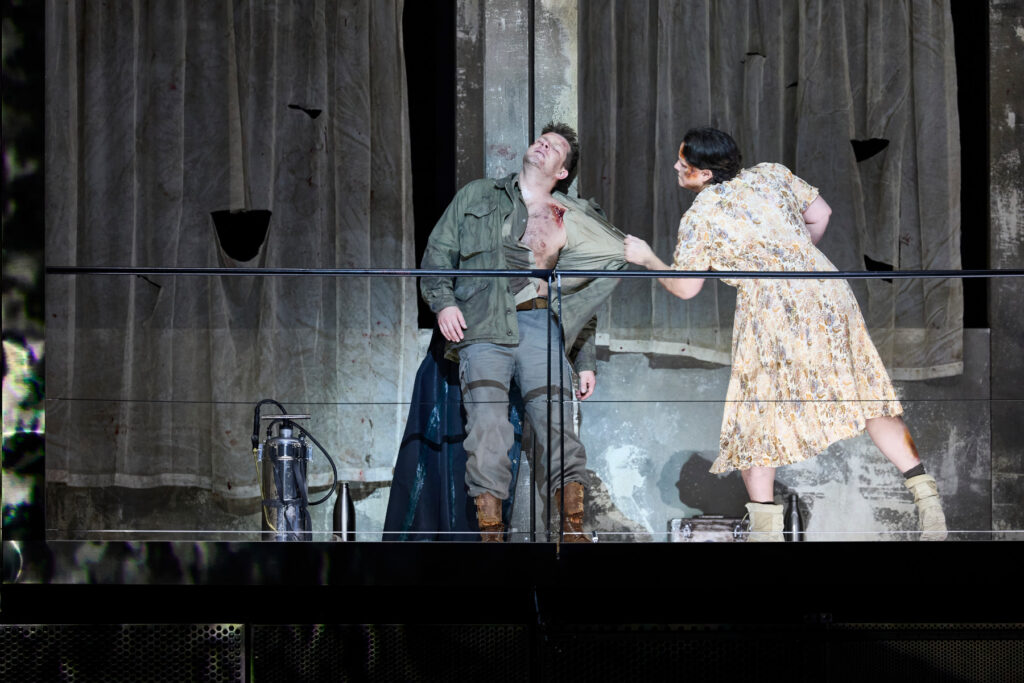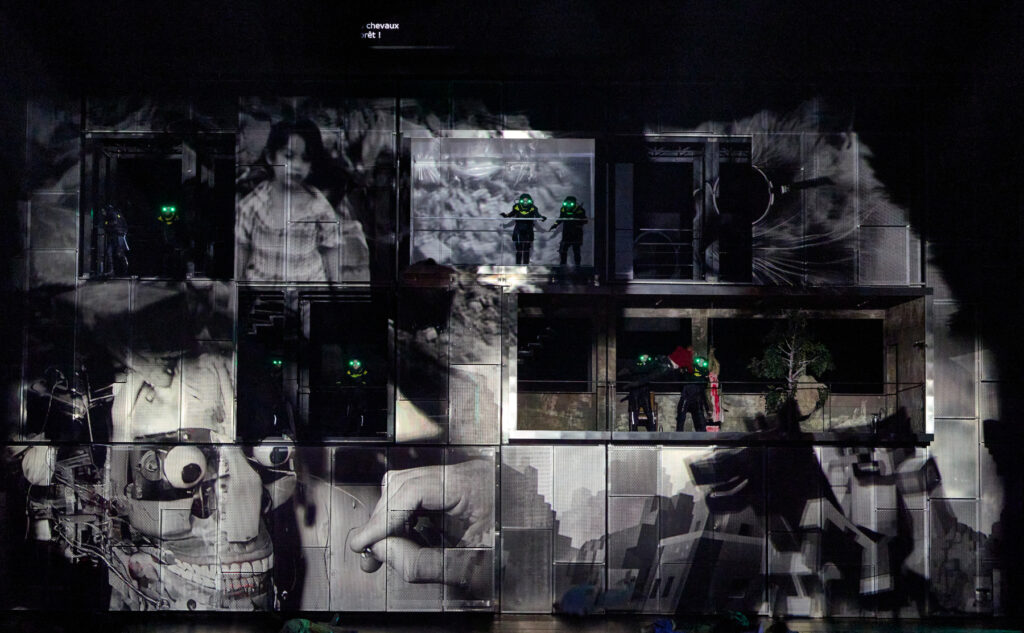How we respond to the second instalment of Calixto Bieito’s Ring cycle at Opéra Bastille may depend on your capacity to accept boundary-pushing challenges, or how comfortable you feel with a post-apocalyptic approach that, at times, verges on the emotionally sterile. The programme book informs us that the Spanish director emphasises Die Walküre’s warlike aspects in a futuristic context “suffused with absurdity and the grotesque”, apparently reminiscent of Terry Gilliam’s dystopian black comedy Brazil. Traditionalists beware!
In this radical interpretation, the Catalan maverick has traded the mythological realm of Valhalla for a dehumanised world dominated by digital technology; the Valkyries portrayed as a squadron of masked cyborg stormtroopers. The natural world has been destroyed, its annihilation suggested in the chemical suit, mask and oxygen cylinder worn by Siegmund when first entering Hunding’s cheerless hut adorned by little more than a struggling tree. Onto this uninviting setting, there’s Bieito’s trademark sadism (remember his ENO Carmen?), where Sieglinde’s bruises and scarred face are readily apparent, other serial abuses later transferring to the relationship between Wotan and Brünnhilde. Elsewhere, video projections portray a calamitous and war-torn state seemingly survived only by wild animals. By Act 2, a robotic dog stalks the stage (echoes of K9 to those familiar with the Dr Who television series from the late 1970s), its appearance prompting booing from one very vocal member of the audience.

Bieito seems intent on upending convention to make determinedly provocative gestures. The sword, Nothung, is casually pulled by Siegmund from the floor of the stage, while, above him, Hunding changes from sober suit to a military uniform. No sleeping draught for him. Wotan’s domain in Act 2 is a basement apartment cum laboratory (with blood-red cables that evoke sci-fi associations) where Brünnhilde arrives on a child’s hobby horse attired in an electric blue ballgown – more aristo than warrior. Fractured relationships between Wotan and Fricka first glimpsed in Das Rheingold now take a more unsettling direction as she mocks her husband’s diminishing powers by pleasuring herself – a gratuitous act or a further sign of Wotan’s fading authority? If any of the above makes sense, it is undone during Act 3 by the sight of Wotan’s systematic distribution of gas masks, a purposeless distraction beyond ridicule that does nothing to suggest the depth of feeling he has for Brünnhilde, especially when singing the line “you are my heart’s holiest pride”. What could have been the work’s emotional high-water mark is wilfully abandoned in a farewell scene where we witness Wotan pirouetting across the stage.

If Bieito’s aesthetic vision is irredeemably confusing and one which pays little or no respect for the heroism of Wagner’s protagonists, the singing of this outstanding cast brings reward in plenty. Chief amongst the memorable performances is the partnership between Elza van den Heever’s truly magnetic Sieglinde and Stanislas de Barbeyrac’s virile Siegmund. Both command proceedings early on and towards the end of Act 1 give a rapturous rendition of their extended duet. Regrettably, the chemistry belonging to this scene is never equalled. Christopher Maltman, substituting for an indisposed Iain Paterson, is warmly lyrical and adds abundant musical intelligence if not always power. Eve-Maud Hubeaux makes for an imperious Fricka and Günther Groissböck is a malevolent Hunding, both vocally solid. No less engaging is Tamara Wilson as Brünnhilde in a portrayal that combines valour – a bravura opening to Act 2 – and vulnerability – her tone at its most compelling and tender in grief-stricken passages, superbly controlling sotto voce moments.

In the pit, Pablo Heras-Casado draws stylish playing from the Orchestre de l’Opéra national de Paris where brisk pacing, well-judged balance and numerous outstanding solo contributions add up to an impressive achievement. In summary, this Walküre will be a much-discussed production, ensuring oppositional positions to defend and disparage with equal venom.Perhaps Calixto Bieito is trading on this before completing his Ring cycle? Of the two approaches to this production, one can be open-minded or go for the eyes wide shut option.
David Truslove
Die Walküre
Music & libretto: Richard Wagner
Cast & Production:
Wotan – Christopher Maltman; Siegmund – Stanislas de Barbeyrac; Sieglinde – Elza van den Heever; Brünnhilde – Tamara Wilson; Hunding – Günther Groissböck; Fricka – Eve-Maud Hubeaux; Gerhilde – Louise Foor
Director – Calixto Bieito; Sets – Rebecca Ringst; Costumes – Ingo Krügler; Lighting – Michael Bauer; Video – Sarah Derendinger; Dramaturgy – Bethany Auer; Orchestre de l’Opéra national de Paris; Conductor – Pablo Heras-Casado
Opéra Bastille, Paris, 15 November 2025
All photos by Herwig Prammer – OnP